#ReaCT2020 Report on Terrorism and Radicalisation in Europe (N.1, Year 1)
Click here to download:
#ReaCT2020
Report on Terrorism and Radicalisation in Europe
by the National Observatory on Radicalisation and Counter-Terrorism based in Rome. Italian-version only. Published in January 2020.

ReaCT is a network whose public and private co-founders and partners study terrorism and radicalisation from different perspectives, at an academic or operational level. It promotes a multi-disciplinary approach to the subject and contributes to a comprehensive and up-to-date understanding of underlying issues.
MORE ON REACT HERE
CONTENT AND ABSTRACTS IN ENGLISH
06 ReaCT: Who We Are
08 #ReaCT2020 – Introduction
10 A Snapshot of Terrorism in Europe
13 Claudio Bertolotti, Numbers and Outcomes of the ‘New Insurrectional Terrorism’ in Europe: from the Caliphate to the Post-ISIS Scenario
This essay outlines the main trends emerging from START InSight’s detailed database on Islamist terror attacks and incidents (2004 onwards); the latter enables to produce quantitative analyses on different levels -from profiles of attackers down to operational outcomes such as strategic ‘success’ and media attention. These trends tell us for instance that 70% of European homegrown jihadis were born in the ’80s and ’90s; and that 85% of the attacks which took place between 2014-2019 were carried out by lone-actors, mostly brandishing cold steel weapons (63% of the cases; vehicles were used in 16% of the attacks). The database also indicates that from 2015 onward a so-called emulative effect takes hold in Europe, consisting in autonomous actions by self-starters, which are inspired or triggered by a main event and which occur within the following 8 days. The curve discloses that over the past 5 years, such actions represented 24% of the total: in Great Britain, their incidence reached 41%. In 2019, 75% of attacks led to a ‘functional blockade’; a most significant outcome for terrorism on European soil: security forces’ operational activities, transport, urban mobility, everyday life were all impacted, despite the attacker’s access to limited resources.
20 Chiara Sulmoni, Radicalisation and De-radicalisation. Lines of Inquiry
Almost 20 years have elapsed since the initial symptoms of a distinctly European jihadi scene started to manifest; today, quantitative data allow us to identify and investigate trends of so-called homegrown Islamist terrorism. Radicalisation on the other hand is subtler and more complex to track and measure, while the need for large-scale prevention and intervention (deradicalisation) gave rise to a whole new and, at times, controversial sector, where progress and outcomes are difficult to assess. Furthermore, academic research, political stances and realities on the ground are not always aligned, which adds to the challenges awaiting Europe in the post-Caliphate ‘wave’. Exploring the mechanisms and the contexts accelerating recruitment remains crucial, but ‘profiling’ the obstacles met by practitioners in different countries is also important. Recent events in London, where two former convicts carried out terror attacks within a couple of months of each other between the end of 2019 and the beginning of 2020, ignited a heated debate on the issue of deradicalisation. While questioning the limits of such programmes is legitimate, expectations are often misplaced and the organisational complexity of these interventions not fully understood, thus compromising a balanced critique.
25 Giusy Criscuolo, The Communication of the Islamic State
This essay offers an updated overview of the internet platforms used by Islamic State and al-Qaeda and an in-depth analysis of these groups’ new communicative techniques and potential targets, including the repercussions of online recruiting. In recent years, the Caliphate’s activities on internet platforms have been particularly fruitful, gathering significant support, especially among youth and women.
30 Valentina Ciappina, The Dimensions and Effects of Cyber-Jihad and Videogames
The essential advantage of video games -when compared to television, audio recordings or books- is their interactivity. In a virtual world, a person behind a monitor can actively influence the course of events and become what he/she can not or does not have the courage to be in real life. This also offers unique opportunities for terrorist organizations. The online gaming space allows people to get in touch in a remote and anonymous way, and to overcome a sense of helplessness they might experience in everyday life: a shared perception of injustice and inadequacy makes these subjects more vulnerable and turns them into potential recruits. People who are isolated and vulnerable to radicalization tend to validate extremist messages. Over time, their isolation leads to the normalization of extremist opinions and hate speech. Such phenomenon is called ‘Gaming Jihad’ and it’s the way in which terrorist organizations have exploited violent games and images to attract young recruits.
36 Barbara Lucini, The Far Right: Current Risks and Future Threats
The international scenario of current extremist threats needs a strong focus on the phenomenon of right-wing extremism. This phenomenon is complex, dynamic and requires to be understood according to criteria typical of crisis management, such as characteristics related to threat exposure, the perception of risk and the cognitive definition of the phenomenon itself. This extremism is also determined by labile boundaries, grey areas of overlap between different ideological tendencies, thus defining cultural and ideological hybrids, which often escape the systematic categorization of this form of extremism. Cultural and sociological dimensions are also key factors to be included in the analysis of these types of extremism, providing useful information to better understand peculiar relational and communicative patterns. In the near future, to enhance security and resilience in face of such threat, it is worthwhile to increase scientific attention to this highly complex and interconnected phenomenon.
42 Marco Lombardi, To Counter an Everlasting Enemy, We Need to Redefine Terrorism
From the very beginning, the Islamic State (IS) has taken everyone by surprise, most noticeably by seizing control over the media’s communicative and public domains through effective strategic moves, insinuating itself into the global political agenda, and defying the security experts that have grappled with its establishment and its ability to control territories and expand outwards like an unstoppable shockwave. However, the key question that has accompanied the Islamic State throughout its history concerns how this terrorist group has been, and still is, capable of adapting and evolving. In the context of hybrid warfare, in which each actor plays a specific role, IS has demonstrated that it is a formidable actor capable of playing offense on both physical and virtual battlefields, where communication has become a fundamental asset. The morphogenetic processes of the Islamic State, when read through the signs of communication, which not only narrate it but also constitute its organisational structure, reveal a threat that is destined to renew itself in an opportunistic and creative way within the reticular and conflictual world that it expresses. The new organisational structures of terrorism have become flexible and adaptable: belonging to the group has been substituted by belonging to the network based on relations between single individuals who imitate, confirm and emulate one another. The attempts to interpret this change often clash with the definition of terrorism with which everyone grapples in order to understand if the events that we are starting from are acts of “terrorism” or not. The limits of this debate, and the tentativeness of its outcome, is that the players are trapped in an attempt to confirm existing models and fail to fully grasp the evolutionary capacity of these patterns of terrorism, thus disrupting the interpretative frameworks of those who fight it. Fighting terrorism today needs new perspective and mind sets.
17 Matteo Bressan, The Evolution of the Terrorist Threat following al-Baghdadi’s Death
Although General William H. Seely III, Commander of the US-led coalition believes that the capabilities of the Islamic State are far from being sufficient to regain portions of territory, their presence in Deir ez-Zur province in Syria and in Diyala province in Iraq represents a real threat. Following the killing of ISIS former leader Abu Bakr al-Baghdadi in the night between the 26th and the 27th of October 2020, multiple challenges remain -not only in Syria and Iraq-. Namely, the issue of returnees, prisoners, YPG and al-Qaeda in Syria.
23 Francesco Pettinari, Jihadist Radicalisation. Calculating the Activation Times of Radicalised Individuals
The endogenous threat that radicalised individuals pose to European security makes it necessary to investigate their activation time; meaning, the stretch of time incurring between their first encounter with jihadist ideology, and the first violent action they perpetrate. From a statistical analysis on a sample of 46 homegrown jihadists who carried out attacks in Europe between 2014 and 2017, we can infer that their activation takes place between the first and the third year since the beginning of their radicalisation process. However, if the total sample is further divided according to different radicalisation processes, results consistently vary: individuals who radicalised through ‘face-to-face’ interaction (29 out of 46), most probably ‘activated’ between the second and the fourth year. On the other hand, those who ‘self-radicalised’ online (17 out of 46) activated within the first year, with half of them committing a violent action within the first six months. Therefore, it clearly emerges how ‘self-radicalised’ individuals tend to act faster than their counterparts, and that different radicalisation processes should be taken into consideration when trying to anticipate activation.
(The above-mentioned statistical analysis was conducted by the author in 2019. All information related to the sample were derived from a cross-examination of open source articles and investigation documents)
27 Deborah Basileo, Cyber-Terrorism and Information Warfare – Little Awareness and Big Regulatory Limits
In the long, steady war for information control, a virus is creeping in: cyberterrorism. Generally conceived as a “politically motivated attack against information, computer systems, computer programs, and data”, it lacks specific characteristics as well as a clear and internationally-recognised definition; furthermore, it is often confused with cyberattacks. A thin line actually separates cyberattacks from cyberterrorism. But in a world dominated by an increasing rate of cyberattacks perpetrated by cybercriminals, can we keep on leaning on ‘shy’ regulatory responses mainly conceived to ensure data protection?
33 Ginevra Fontana, Terrorism 2.0: Between Drones and New Technologies
In recent years, a series of different ‘actors’ –including criminal and terrorist groups– have been increasingly exploiting off-the-shelf technologies for their own ends: for instance, in a number of cases commercial drones were flown over prisons with illegal deliveries for convicts; they were also used for espionage and terror attacks. Even messaging apps, with their end-to-end encryption protecting users’ privacy, have proven to be a double-edged sword in the hands of ill-intentioned actors. Should we therefore expect these groups to also take advantage of the inherent potential of ‘ground delivery drones’ and autonomous cars soon?
39 Anna Triggiano, Countering Terrorist Financing: The EU Legal Frame and Italian Legislation
45 Claudio Bertolotti, The Italian ideologue of the Islamic State – A Case Study
Editor: START InSight sagl, Lugano (Switzerland)
info@startinsight.eu










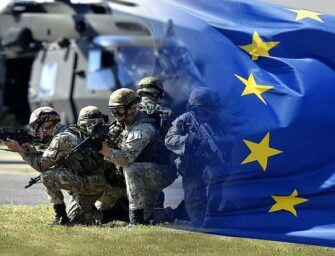









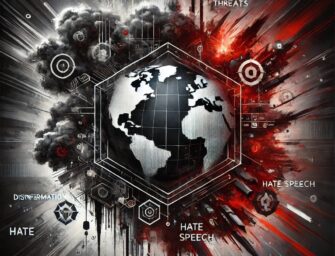



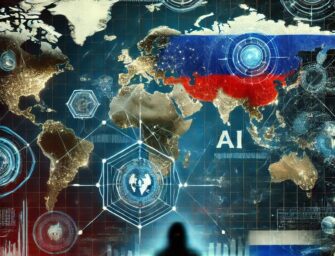






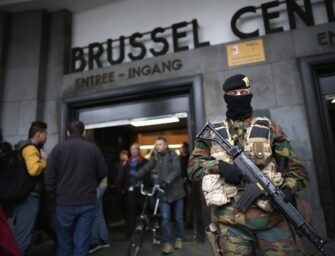




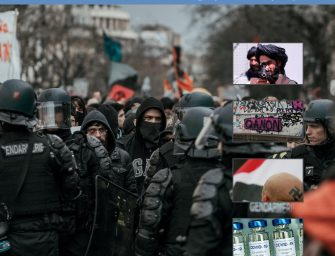






There are no comments
Add yours